Keep the Deer from Eating the Plants in Your Garden
As a gardening enthusiast, I cherish the sight of deer in the wild, but when those graceful creatures turn my garden beds into their personal snack bar, it’s a different story. To say deer can be a nuisance is putting it mildly; they’re capable of decimating plants overnight. I have been on a mission for some time. I have been determined to find non-harmful ways to protect my beloved garden from these four-legged visitors.
There’s a whole arsenal of strategies available to keep deer at bay. From physical barriers that frustrate their attempts to get into the garde and smelly deterrents that persuade them to look elsewhere for their next meal, the choices were vast.
But you will never guess what I tried last year and it really helps? Continue reading to find out.
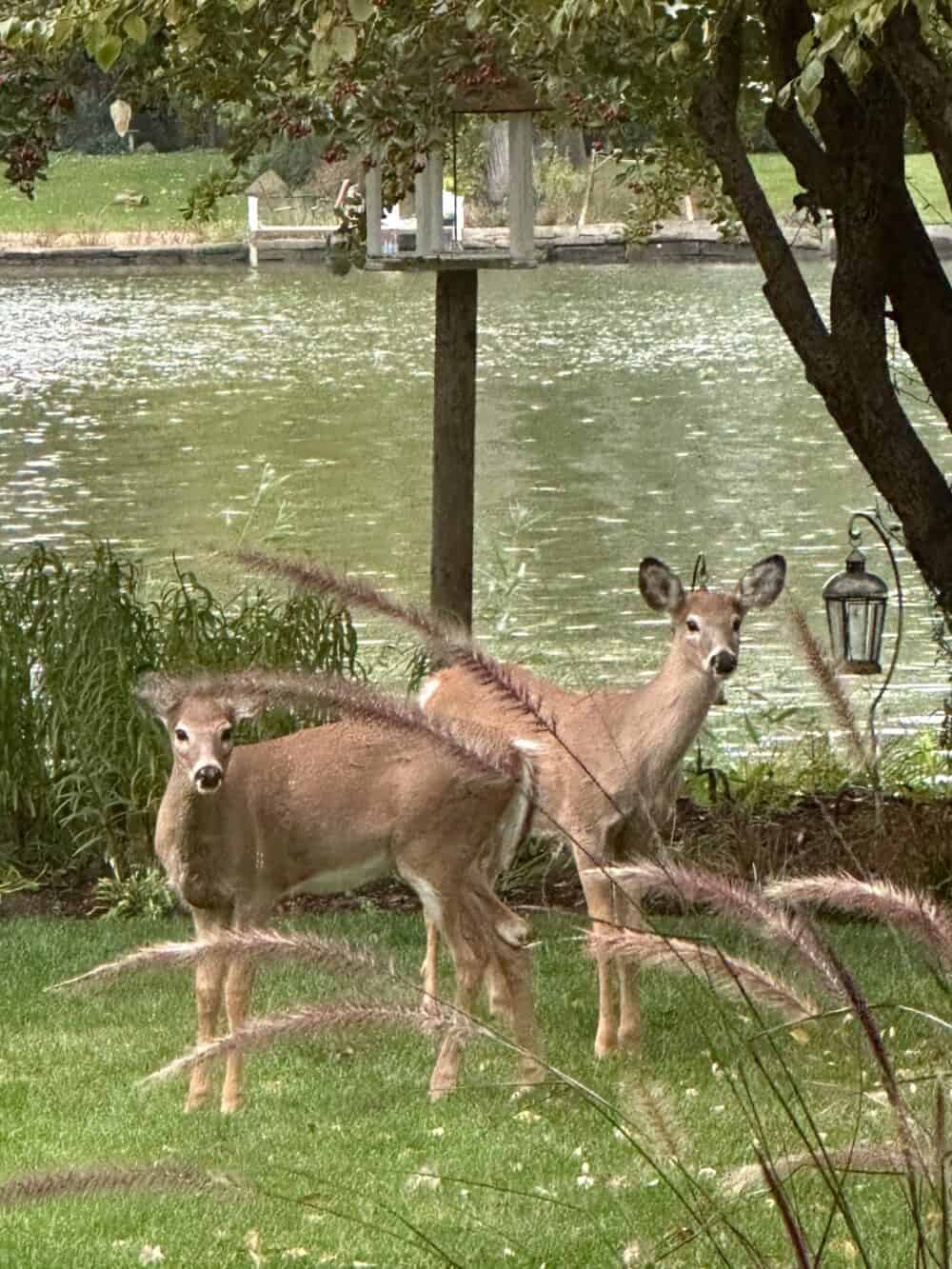
On my blog Living Large in A Small House, I may sometimes use affiliate links, which means a small commission is earned if you purchase via the link. The price will be the same whether you use the affiliate link or go directly to the vendor’s website using a non-affiliate link. You can find my full Disclosure Policy HERE
Experimenting with a mix of measures turned out to be essential, as what works like a charm for one gardener might only slightly inconvenience another’s antlered adversaries.
Through trial and error, I pinpointed a few methods that delivered results for me. Short of putting up a fence to keep out my hungry deer, I’ve found the best ways that work for me.
Understanding Deer Behavior
Before we dive into keeping those hoofed browsers at bay from our gardens, let’s look closely at why they might be strolling in. Understanding deer behavior is about grasping their feeding habits and the things in our yards that are most likely to draw them in.
Deer Habitats and Feeding Patterns
Deer, like the white-tailed deer I often see around, aren’t just meandering aimlessly; they’re on a quest for food, and they’re often hungry, very hungry. Biologists have a modest estimate that deer consume around 6 to 8 pounds of food a day. Honestly, watching them, it feels like more. Their habitats are typically edged areas where the forest meets an open space. Think of it as their perfect dining room because it offers them a variety of food sources.
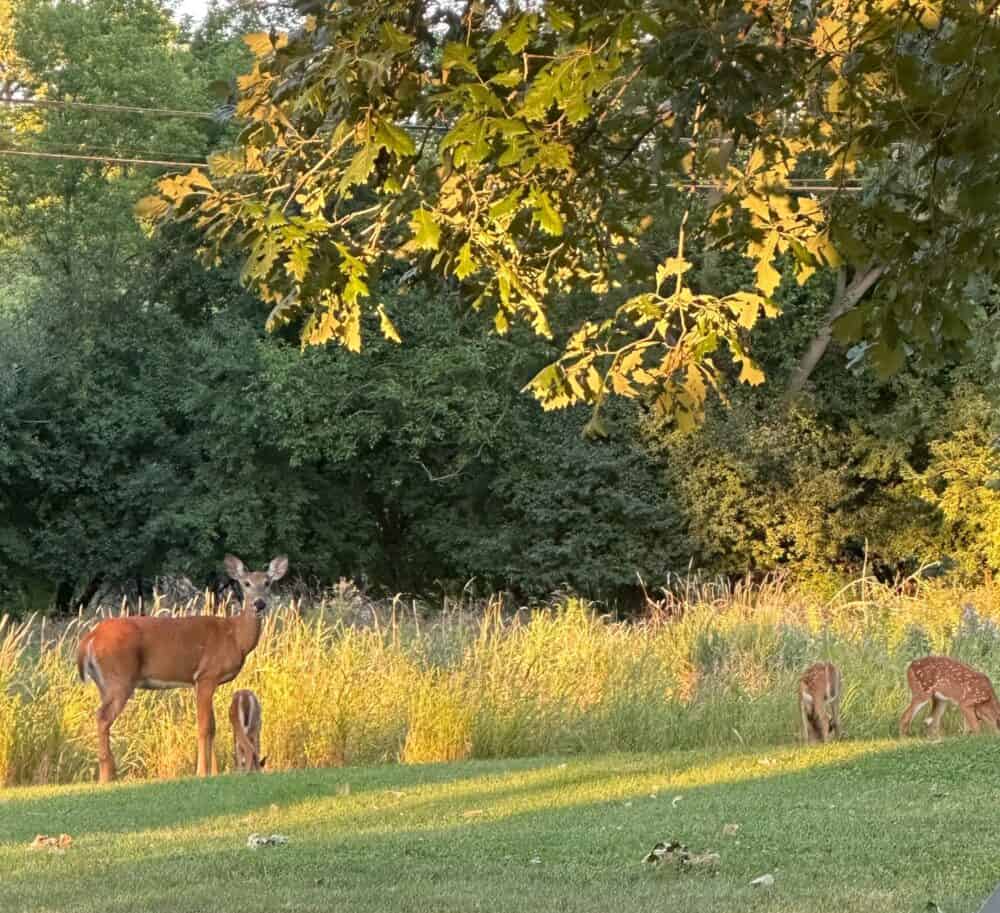
In my case, our family of deer lives in a forested area on our cul-de-sac that is surrounded by water. We have a whole family and each year we have new fawns who need to eat to grow big and strong enough to find their habitat. This past year we had a Doe with four fawns and for the first time, the Dad (the buck) stuck around for the whole summer.
These avid climbers and jumpers trek across their home ranges, which can be quite extensive, searching for their next meal. They have a strong sense of smell that guides them to the yummiest and most nutritious snacks, like the tulips I had planted last spring—a big mistake on my part. This year I’ve planted them in my vegetable garden. Fingers crossed they will be ok in that fence area.
Attractants and Repellents
Now, about keeping deer out of our gardens: it seems my ornamentals and vegetable patch were like an all-you-can-eat buffet. Deer are attracted to an array of plants—herbaceous perennials, vegetables, and fruit trees are their favorites. Their palate can occasionally change based on what’s available, so rotating repellents is key.
Deer doesn’t love all scents and tastes, though. Some homemade repellents work by targeting their sensitive noses and tastebuds. For instance, a funky mix of eggs and baking powder in water—I know, it sounds like a bad recipe—can actually discourage them from chomping on plants. It’s about striking a balance between what’s appealing and what’s off-putting to them.

Effective Deer Strategies
When trying to keep deer out of my garden, I’ve realized it’s all about making my green space less appealing to them. Here are some different methods that have worked for me:
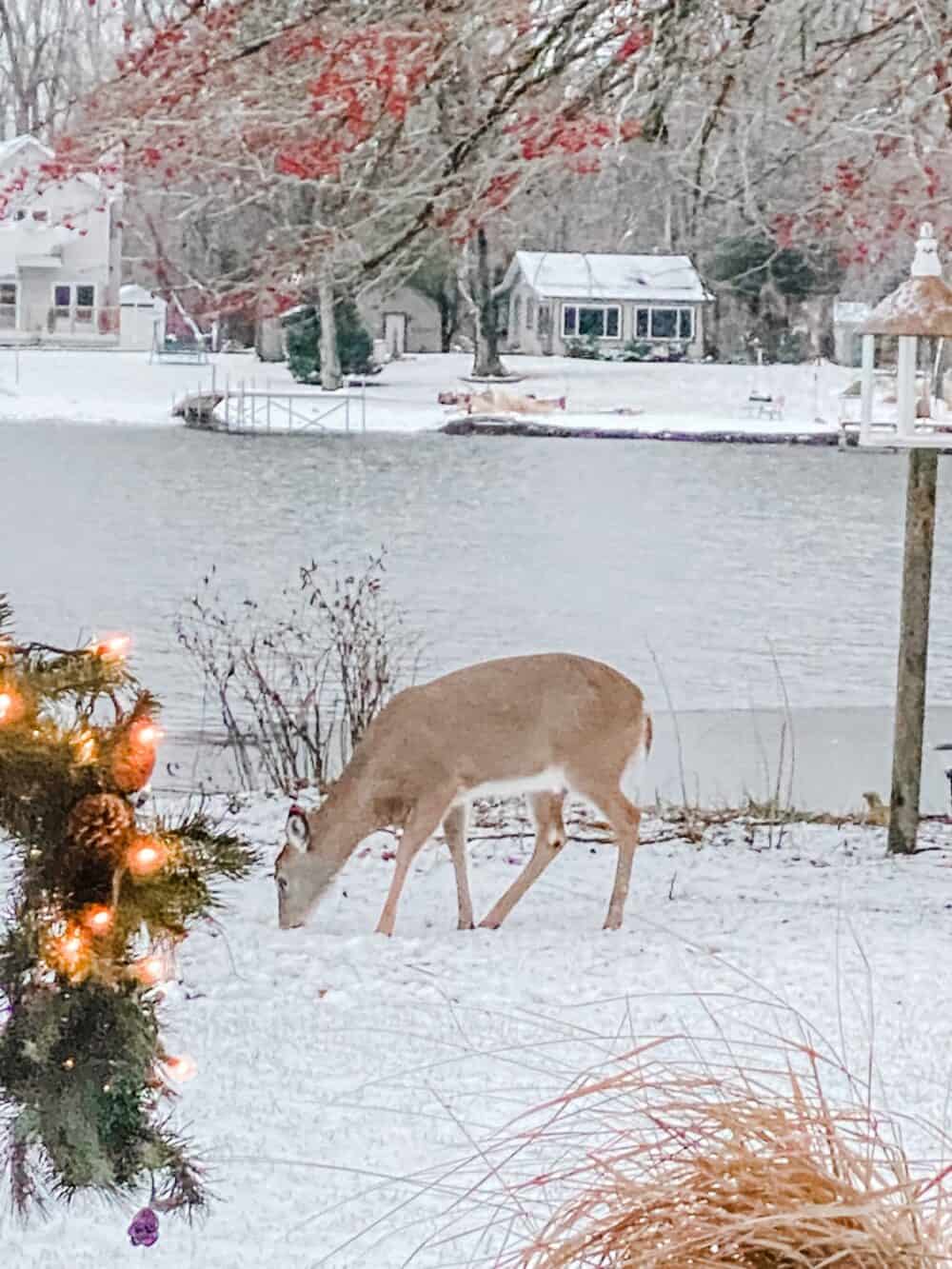
Repellent Sprays and Solutions
Deer love young plants and the tender new buds on plants. You have to start your deterrents early, at the first sign of emerging plants.
I start the season by spraying the entire perimeter of our yard with Liquid Fence. I started last week as my Hellebore is flowering already and the deer had started to nibble so it’s time to strike with the repellent sprays. The first application of the Invisible Fence is followed one week later by another round of spraying. Then it will be something that I do once a month.
I have had great success with deer off spray which uses a combination of ingredients like rotten eggs and essential oils to deter deer. It’s a non-toxic option that needs reapplication after rain. Plantskydd Animal Repellent Spray is a new spray for me but it’s working really well.. It clings well to plants and its main component, blood meal, is a great deterrent.
The combination of the effective deer repellents sprayed around the yard makes my plants as unappealing as possible.
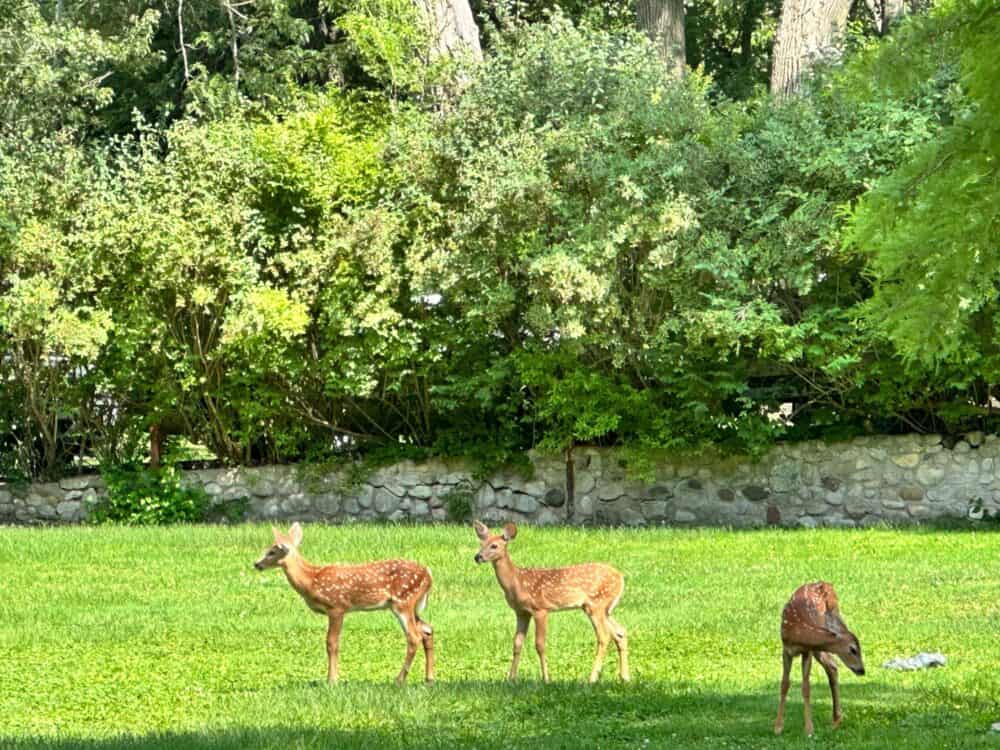
Scent Deer Deterrents
Talking about smells, deer have sensitive noses and I leverage that to my advantage. I use hot pepper sprays around my plants; the fiery scent keeps them at bay. Sometimes, I’ll strategically place ammonia-soaked rags around the garden’s perimeter. Oddly enough, hanging bars of soap, specifically Irish spring soap from trees also seem to mess with their sense of smell and keep them out.
I have also heard that human hair works but it hasn’t worked for me. It could be the fact that I don’t have easy access to human hair. Maybe if you know a salon owner, you could give it a decent try.
I’ve tried using predator urine near my garden’s entry points. Coyote urine works the best for me. The scent gives deer the impression that predators are nearby and the fear of danger is often enough to keep them away.
Things I Use in My Gardens
Auditory and Visual Deer Deterrents
Deer are skittish creatures, so I’ve found that unexpected noises can help. I’ve scattered a few fabric softener strips that flurry in the wind—it’s surprising how well the fluttering noise works. Wind chimes are another option.
I’ve had a lot of success with using scarecrows. Not the kind with arms, legs, and a funny hat. I use the Scarecrow brand of motion-sensor water sprayers.
But just like everything I need to move it around the yard as the deer get used to things.
My New Secret Weapon
My new secret weapon! Last year I was driving by someones house that had little pinwheels in their garden and it got me thinking about how they move in the wind and maybe might be a way to scare my little skittish deer family! Well I’m here to tell you that it has helped. My yard looks a little crazy when they are up (I take them down for special occasions) but they have kept the deer from chomping on my most delicate plants. I also found that I need to move them around for the maximum benefit.

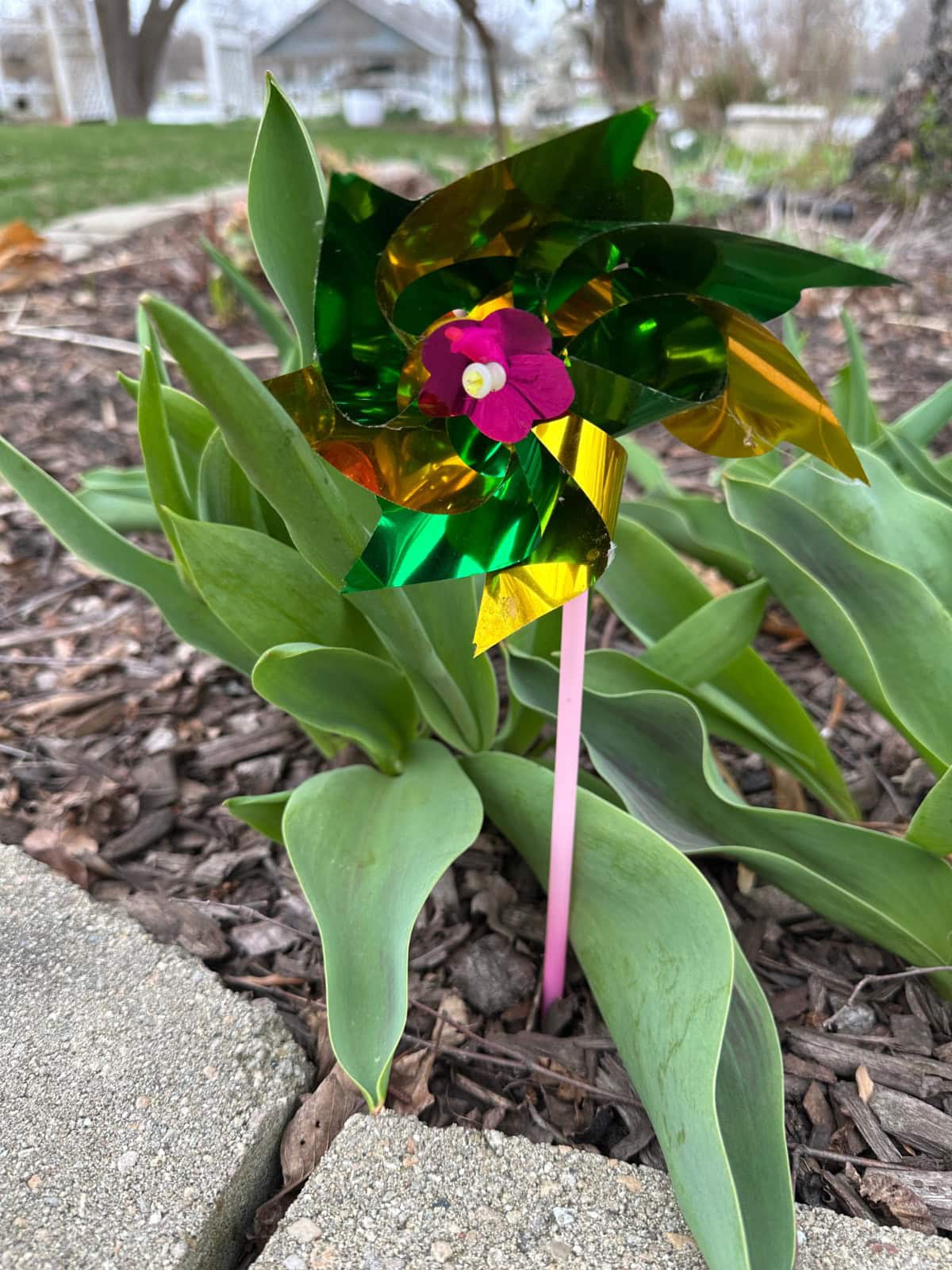
Physical Barriers and Fencing
When I started gardening, I quickly realized keeping deer out was going to be a big part of my routine. While I can’t fence our property because of village regulations, it’s an effective solution for many people. The only fence I can have in my yard is a small one around my vegetable garden. It is a testament to the value of a fence. It’s the only place the deer never touch.
Erecting a fence can be a game-changer, particularly when investing in ones tall enough to challenge even the most ambitious jumper.
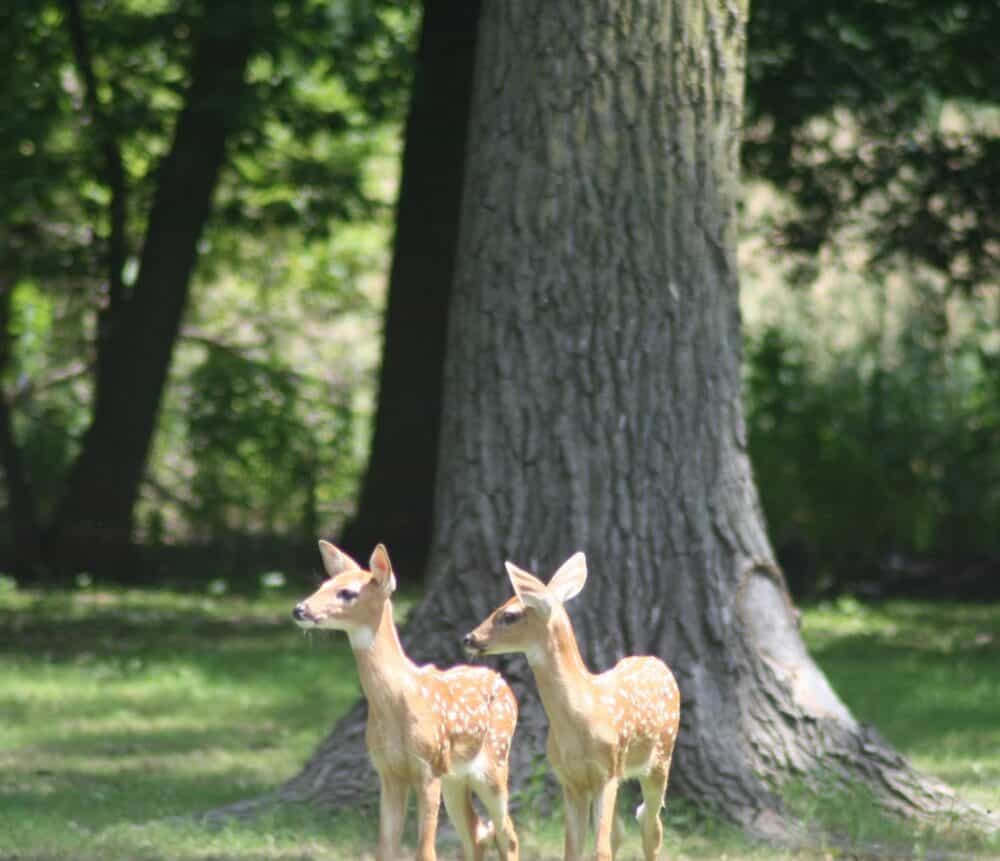
Fence Types and Considerations
- Tall Fences: My first line of defense is often a tall fence, as deer are impressive jumpers, capable of leaping over barriers less than 8 feet high. I’ve learned that height matters—a tall deer fencing needs to be at least 8 feet to prevent them from jumping over.
- Electric Fencing: Sometimes I need a surefire deterrent. That’s where an electric fence comes into play. While it requires careful installation and maintenance, a light shock can be effective. Remember, safety first—I make sure to put up warning signs.
- Stockade Fences: Although more aesthetically pleasing, stockade fences need to be tall and checked regularly for potential gaps that savvy deer might exploit.
- Chicken Wire & Plastic Netting: For smaller plants or raised beds, I’ve used chicken wire or UV-protected plastic netting. This prevents deer from reaching in but doesn’t obstruct my view.
- Double Fencing: In some of my garden patches, I’ve found success with a double fence design. Deer have poor depth perception, so placing two fences about 3-5 feet apart can confuse them.
Table: My Quick Guide to Fencing
| Fence Type | Height | Maintenance | Visibility |
|---|---|---|---|
| Tall Fences | 8+ ft | Low | Low |
| Electric Fences | Variable | High | Variable |
| Stockade Fences | 8+ ft | Moderate | High |
| Chicken Wire | Custom | Low | High |
| Plastic Netting | Custom | Low | High |
| Double Fencing | 8+ ft | Low | Moderate |
Every garden is unique, just like the deer that visit it. I would choose my fencing based on the balance between function and how it fits into my garden’s aesthetic.
Last year we needed some temporary fencing around some tomato plants that we had outside of the fenced vegetable garden. We used plastic netting and steel PVC coated green garden stakes. It lasted for most of the summer but once the deer discovered what was behind it, they plowed the fencing down to the ground. We would put it back up and it was down again the next morning. I think we just got lucky that they didn’t discover it earlier.
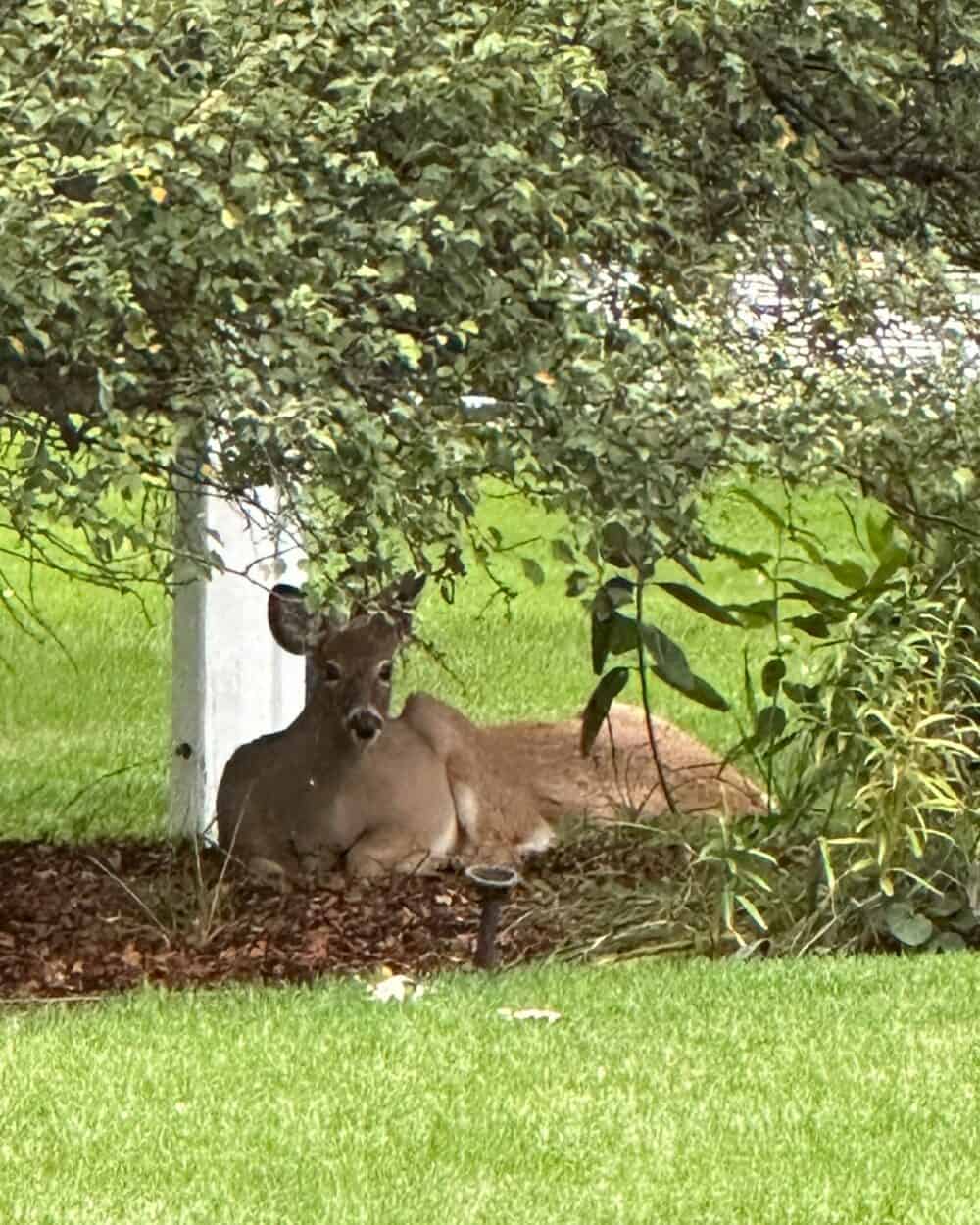
Another thing that I have used and quite by accident is some fishing line. I put some up to keep the geese out of our yard (yes we have many nuisance critters). It also helps to keep the deer at bay.
This however is something I have to be very careful with. I can’t put it in areas where our dog runs.
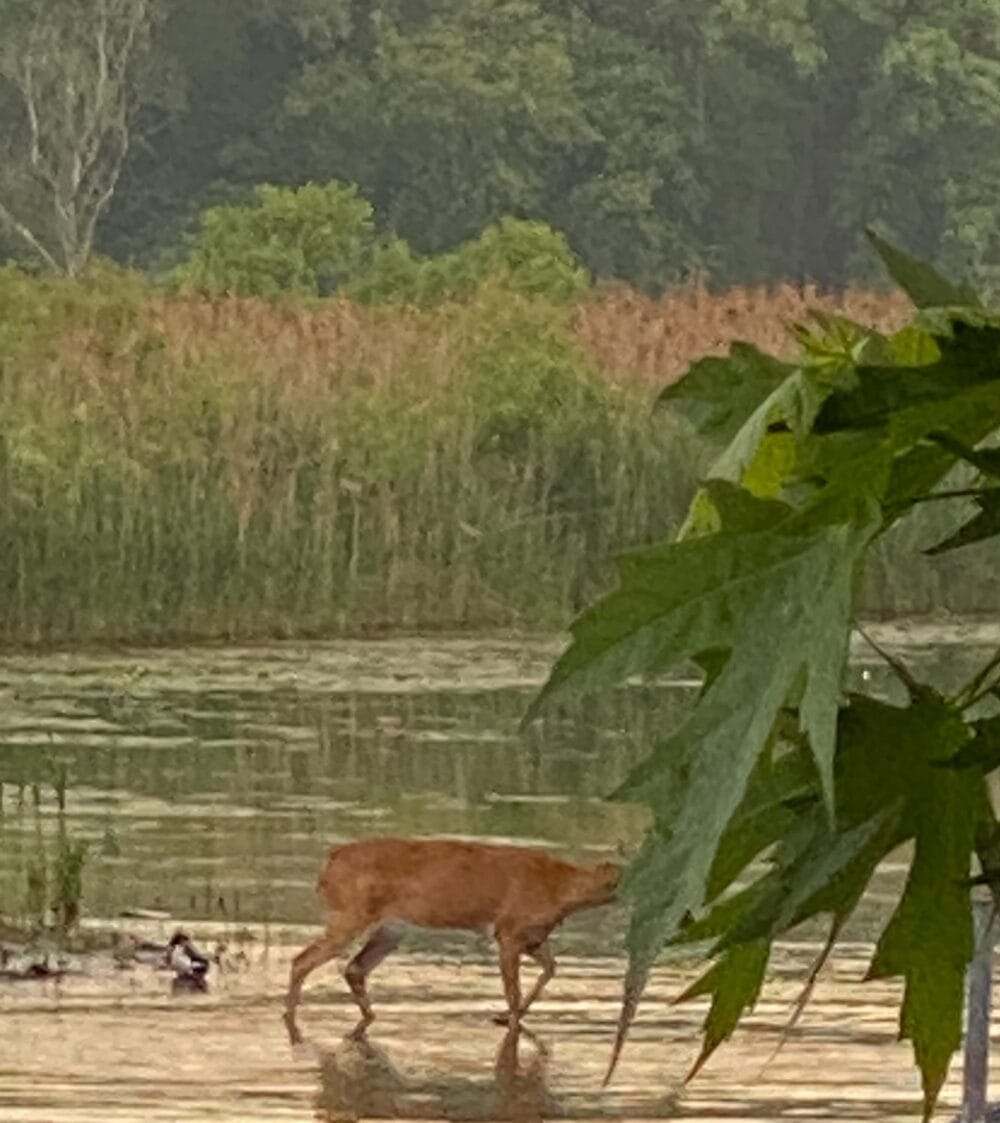
Garden Design and Plant Choices
In my experience, the safest bet is to fill my garden with plants that deer find distasteful. Here’s a list of some deer-resistant plants I like to use in my flower beds and throughout my garden:
- Aromatic plants: Lavender, Sage, Rosemary
- Moisture-rich, but deer-resistant: Lamb’s ear, Russian sage
- For color: Snapdragons, Marigolds
I don’t eliminate the plants that the deers do love but putting these detering plants around them has helped. I’ve found great deer-resistant options that keep my garden looking lovely without becoming a salad bar for deer.
Strategic Garden Layout
When laying out a vegetable garden and flower beds, I use a few simple strategies to deter deer:
- Barricade with plants: I border my garden with strong-smelling aromatic plants that deer tend to avoid.
- Layering: Tall, deer-resistant plants in the back; low, sturdy plants in the front.
Creating a deer-proof garden isn’t just about what I plant—where I plant it makes a huge difference too.
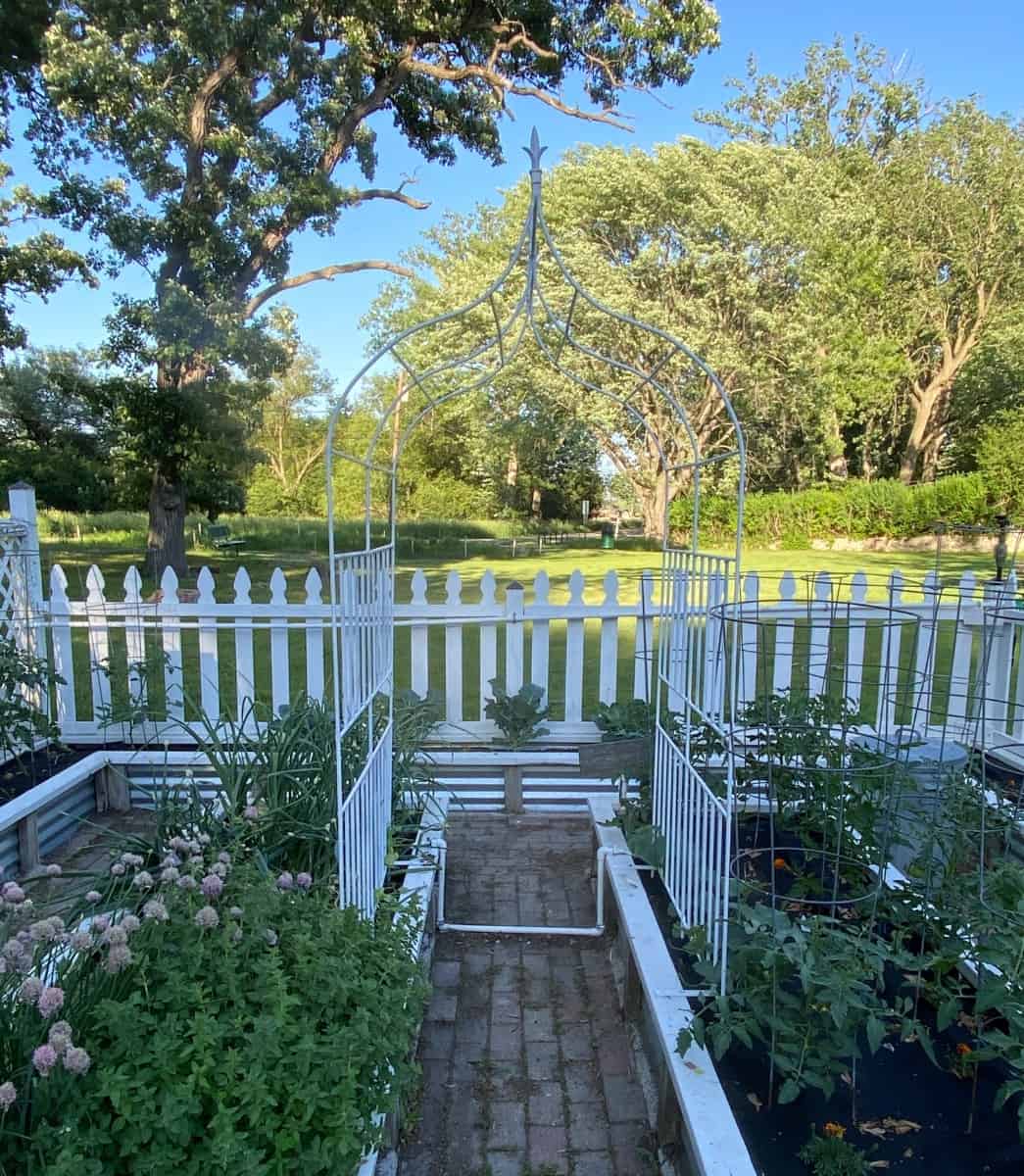
Maintenance and Monitoring
Once I have a system in place to keep deer at bay, it’s crucial to stay vigilant and maintain that system for the best results. This is all about spotting issues early and tweaking strategies as needed.
Regular Upkeep and Adjustments
It’s a good idea to routinely walk through my garden, checking for any signs of deer. This isn’t just about spotting damage; it’s about preempting it. When I notice things are amiss, I make adjustments promptly. For instance, if I see deer tracks near my garden, I’ll move my motion-activated sprinklers to cover those areas more effectively.
I’ve found that bright lights can deter deer if used unpredictably, so I often change the timing and position of these lights to keep the deer guessing. Scare tactics can work in a similar way, but deer get wise to static objects pretty quickly. Therefore, I make sure to switch up the location of scare devices—I’ll move my garden scarecrow every few days, and that seems to be one of the most effective ways to make deer think twice about nibbling on my plants.
Remember, it’s all about making slight but significant tweaks to ensure the longevity and effectiveness of my deer deterrent methods.
If you like me to battle deer in your garden, I wish you luck. It’s an ongoing fight for me.
Typically I’m having one or two major events in the summer and I want my gardens to look nice. It also breaks my heart that all of my hard work trying to make my yard look beautiful can get eaten in just days.
Peace and Love,



Meet Me
My name is Lynn. I live in the suburbs of Chicago in a 1,300 sq. ft. home with my Handy husband, Keith.
I’m an open book about my life on my blog. You can find out more about me by visiting my About page.
Thanks for Following Along
If you enjoyed this post I hope you sign up to be a friend of Living Large in A Small House! Then you won’t miss any of the inspiration that is shared with you each week! You can also follow me on Instagram, Facebook, and YouTube. I share even more inspiration on Pinterest! You can listen to me chat on my Podcast.


A great way to save this idea is to add it to one of your Pinterest boards. You can find the pin button on the top left of the photo when you click on it. Also, don’t forget to follow me on Pinterest
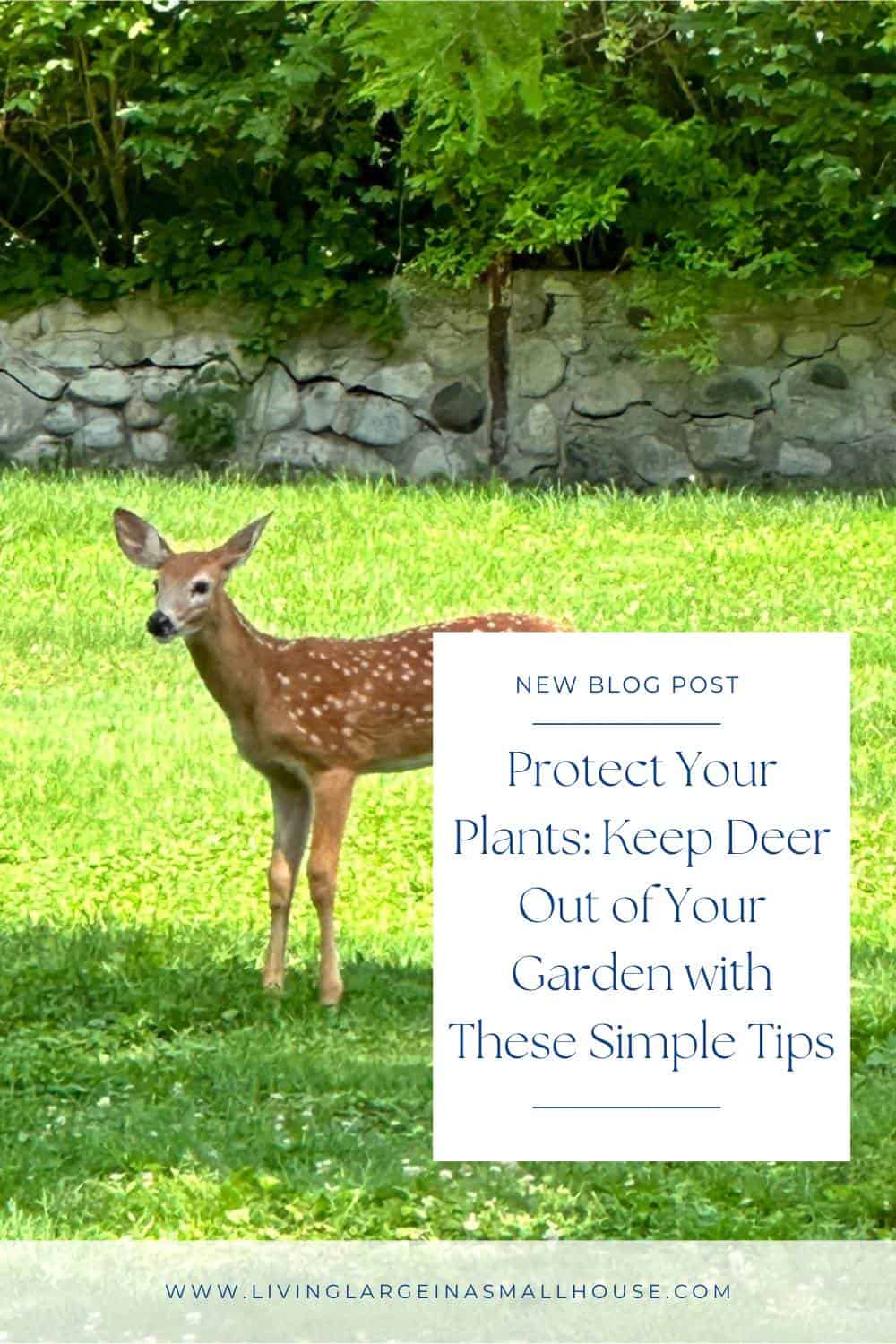

Featured




















These are great tips! We live on the edge of the woods too and while it’s beautiful to watch the deer grow and thrive it’s a bit sad to have them eat all of my tomatoes haha. We have lavender and rosemary in with the vegetables. I’ve tried using human hair and soap but they didn’t really work either. One of my tenants has a dog and that doesn’t even keep them away. I did put up a few flags all around the edge of the flower bed and that seemed to distract them for a bit. Last year we put a couple of tomato plants up on our front porch and that helped. So this year we were thinking about putting a few more things up there and see how it goes.
Hi Maria –
They are cunning and you have to keep them guessing. Human hair never worked for me either but Deer Off works really well. You spray it right on the plant. The trick is to remember to do it often. I do it every other weekend. I’m also incorporating Liquid Fence into my routine and that I’m doing once a month. I saw pinwheels in someones garden the other day and I think I might actually try that too. For me it’s a constant battle in the summer. Good luck and I hope that you get tomatoes this year. I find if I can keep them away in the beginning, once they are more mature the deer go for other plants.
Hi Lynn —
Sorry to hear of your losses in the “Bambi Battles!” Have you tried laying the bird netting on the ground surrounding the plants you want to protect? Deer will avoid it because they fear getting their feet entangled, or so I’m told.
A friend used green bird netting on top of his large hosta garden that encircled a big tree, plus about 3 feet around the perimeter. Although deer were plentiful in his neighborhood, he had really good luck with that. The netting wasn’t visible from the street, and whenever he wanted to mow the yard, it was easy to push or roll the netting out of the way, then replace it again.
Although I haven’t seen any deer in my neighborhood, I plan to surround my straw bale garden with bird netting, laid on the ground — just in case! Will let you know what transpires.
Cheers, g
Hi Gloria –
I have never heard of that before but it makes sense. I will try anything at this point. I’m off to Home Depot! 🙂
Try a 4′ fence, smaller mesh, laid horizontally just above the ground angling a foot or two upwards towards your yard. Make sure to warn people it’s there.
Hi Robert – That’s kind of what I’m think or doing because I can’t have an actual fence. I’ve already warned out neighbors who let their dogs run that I’m doing this. I should probably put up some kind of signs.